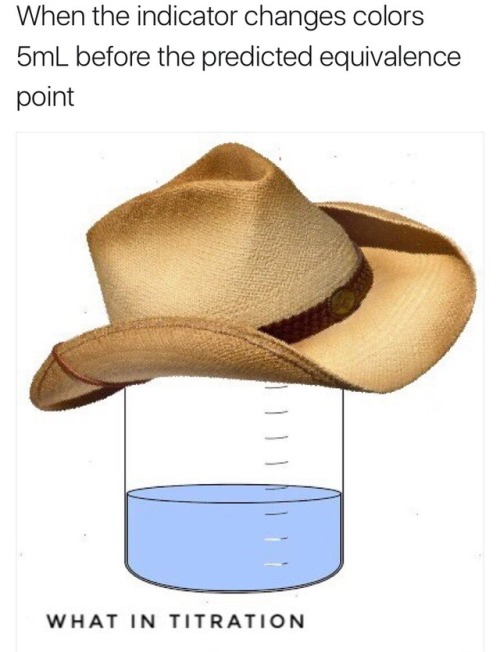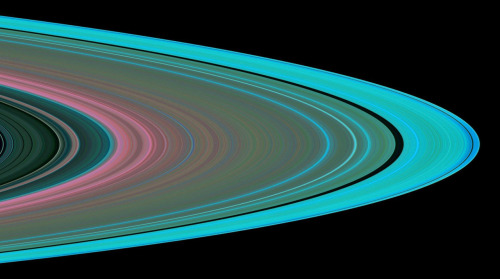Machine Learning: An In-Depth, Non-Technical Guide

Machine Learning: An In-Depth, Non-Technical Guide
A good introductory text in five parts:
Overview, goals, learning types, and algorithms
Data selection, preparation, and modeling
Model evaluation, validation, complexity, and improvement
Model performance and error analysis
Unsupervised learning, related fields, and machine learning in practice
By Alex Castrounis - {InnoArchiTech}
More Posts from Science-is-magical and Others

(Image caption: The above image compares the neural activation patterns between images from the participants’ brains when reading “O eleitor foi ao protesto” (observed) and the computational model’s prediction for “The voter went to the protest” (predicted))
Brain “Reads” Sentences the Same in English and Portuguese
An international research team led by Carnegie Mellon University has found that when the brain “reads” or decodes a sentence in English or Portuguese, its neural activation patterns are the same.
Published in NeuroImage, the study is the first to show that different languages have similar neural signatures for describing events and scenes. By using a machine-learning algorithm, the research team was able to understand the relationship between sentence meaning and brain activation patterns in English and then recognize sentence meaning based on activation patterns in Portuguese. The findings can be used to improve machine translation, brain decoding across languages and, potentially, second language instruction.
“This tells us that, for the most part, the language we happen to learn to speak does not change the organization of the brain,” said Marcel Just, the D.O. Hebb University Professor of Psychology and pioneer in using brain imaging and machine-learning techniques to identify how the brain deciphers thoughts and concepts.
“Semantic information is represented in the same place in the brain and the same pattern of intensities for everyone. Knowing this means that brain to brain or brain to computer interfaces can probably be the same for speakers of all languages,” Just said.
For the study, 15 native Portuguese speakers — eight were bilingual in Portuguese and English — read 60 sentences in Portuguese while in a functional magnetic resonance imaging (fMRI) scanner. A CMU-developed computational model was able to predict which sentences the participants were reading in Portuguese, based only on activation patterns.
The computational model uses a set of 42 concept-level semantic features and six markers of the concepts’ roles in the sentence, such as agent or action, to identify brain activation patterns in English.
With 67 percent accuracy, the model predicted which sentences were read in Portuguese. The resulting brain images showed that the activation patterns for the 60 sentences were in the same brain locations and at similar intensity levels for both English and Portuguese sentences.
Additionally, the results revealed the activation patterns could be grouped into four semantic categories, depending on the sentence’s focus: people, places, actions and feelings. The groupings were very similar across languages, reinforcing the organization of information in the brain is the same regardless of the language in which it is expressed.
“The cross-language prediction model captured the conceptual gist of the described event or state in the sentences, rather than depending on particular language idiosyncrasies. It demonstrated a meta-language prediction capability from neural signals across people, languages and bilingual status,” said Ying Yang, a postdoctoral associate in psychology at CMU and first author of the study.

One of my favorite things about biology is that there are so many diagrams like this that look like shitposts if you remove any and all context from them
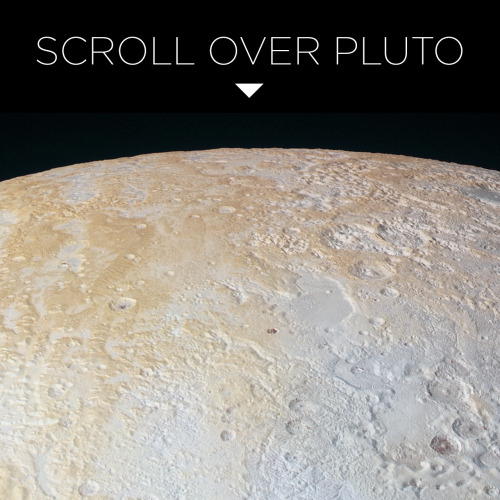
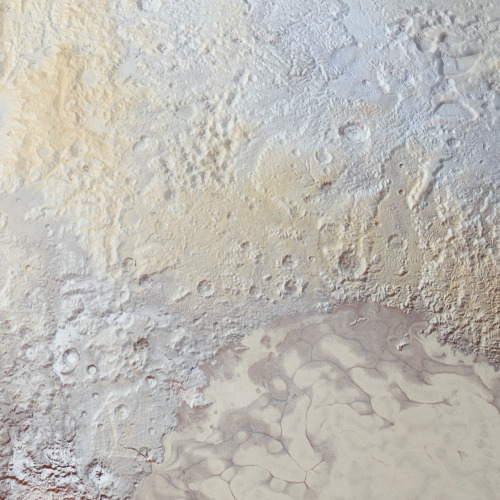
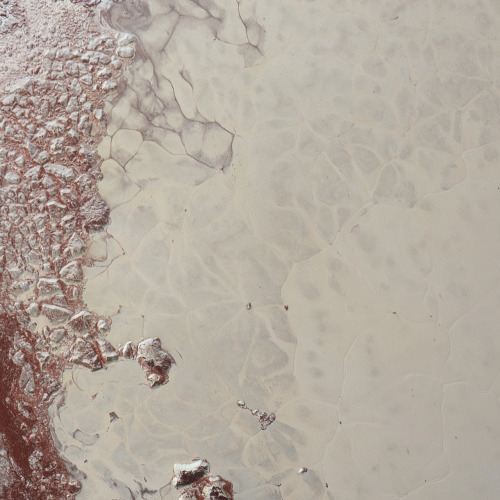
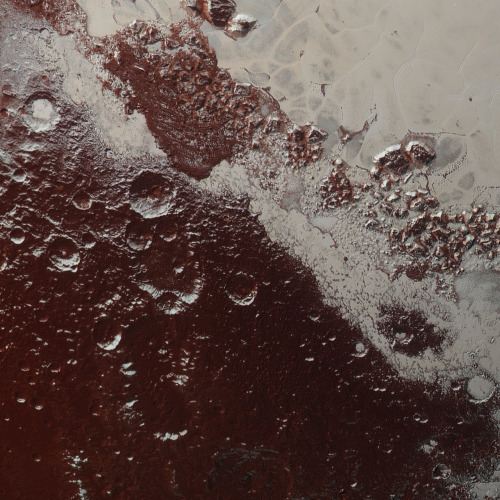
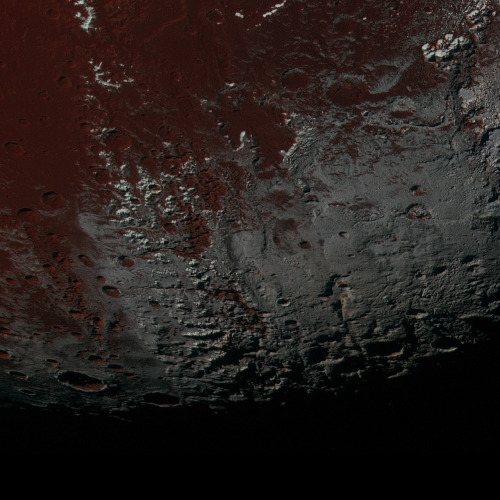
This is one slice of an incredible high resolution, enhanced color image of Pluto, recently released by NASA. You can see the full, larger version here.
Credit: NASA/JHUAPL/SwRI

“Surface tension dictates the spherical cap shape of small sessile drops, whereas gravity flattens larger drops into millimeter-thick flat puddles. In contrast with drops, soap bubbles remain spherical at much larger sizes. However, we demonstrate experimentally and theoretically that meter-sized bubbles also flatten under their weight, and we compute their shapes. We find that mechanics does not impose a maximum height for large soap bubbles, but, in practice, the physicochemical properties of surfactants limit the access to this self-similar regime where the height grows as the radius to the power 2/3. An exact analogy shows that the shape of giant soap bubbles is nevertheless realized by large inflatable structures.” Via.
Magnetospheres: How Do They Work?
The sun, Earth, and many other planets are surrounded by giant magnetic bubbles.

Space may seem empty, but it’s actually a dynamic place, dominated by invisible forces, including those created by magnetic fields. Magnetospheres – the areas around planets and stars dominated by their magnetic fields – are found throughout our solar system. They deflect high-energy, charged particles called cosmic rays that are mostly spewed out by the sun, but can also come from interstellar space. Along with atmospheres, they help protect the planets’ surfaces from this harmful radiation.
It’s possible that Earth’s protective magnetosphere was essential for the development of conditions friendly to life, so finding magnetospheres around other planets is a big step toward determining if they could support life.
But not all magnetospheres are created equal – even in our own backyard, not all planets in our solar system have a magnetic field, and the ones we have observed are all surprisingly different.

Earth’s magnetosphere is created by the constantly moving molten metal inside Earth. This invisible “force field” around our planet has an ice cream cone-like shape, with a rounded front and a long, trailing tail that faces away from the sun. The magnetosphere is shaped that way because of the constant pressure from the solar wind and magnetic fields on the sun-facing side.

Earth’s magnetosphere deflects most charged particles away from our planet – but some do become trapped in the magnetic field and create auroras when they rain down into the atmosphere.

We have several missions that study Earth’s magnetosphere – including the Magnetospheric Multiscale mission, Van Allen Probes, and Time History of Events and Macroscale Interactions during Substorms (also known as THEMIS) – along with a host of other satellites that study other aspects of the sun-Earth connection.


Mercury, with a substantial iron-rich core, has a magnetic field that is only about 1% as strong as Earth’s. It is thought that the planet’s magnetosphere is stifled by the intense solar wind, limiting its strength, although even without this effect, it still would not be as strong as Earth’s. The MESSENGER satellite orbited Mercury from 2011 to 2015, helping us understand our tiny terrestrial neighbor.


After the sun, Jupiter has by far the biggest magnetosphere in our solar system – it stretches about 12 million miles from east to west, almost 15 times the width of the sun. (Earth’s, on the other hand, could easily fit inside the sun.) Jupiter does not have a molten metal core like Earth; instead, its magnetic field is created by a core of compressed liquid metallic hydrogen.

One of Jupiter’s moons, Io, has intense volcanic activity that spews particles into Jupiter’s magnetosphere. These particles create intense radiation belts and the large auroras around Jupiter’s poles.

Ganymede, Jupiter’s largest moon, also has its own magnetic field and magnetosphere – making it the only moon with one. Its weak field, nestled in Jupiter’s enormous shell, scarcely ruffles the planet’s magnetic field.
Our Juno mission orbits inside the Jovian magnetosphere sending back observations so we can better understand this region. Previous observations have been received from Pioneers 10 and 11, Voyagers 1 and 2, Ulysses, Galileo and Cassini in their flybys and orbits around Jupiter.

Saturn’s moon Enceladus transforms the shape of its magnetosphere. Active geysers on the moon’s south pole eject oxygen and water molecules into the space around the planet. These particles, much like Io’s volcanic emissions at Jupiter, generate the auroras around the planet’s poles. Our Cassini mission studies Saturn’s magnetic field and auroras, as well as its moon Enceladus.


Uranus’ magnetosphere wasn’t discovered until 1986 when data from Voyager 2’s flyby revealed weak, variable radio emissions. Uranus’ magnetic field and rotation axis are out of alignment by 59 degrees, unlike Earth’s, whose magnetic field and rotation axis differ by only 11 degrees. On top of that, the magnetic field axis does not go through the center of the planet, so the strength of the magnetic field varies dramatically across the surface. This misalignment also means that Uranus’ magnetotail – the part of the magnetosphere that trails away from the sun – is twisted into a long corkscrew.


Neptune’s magnetosphere is also tilted from its rotation axis, but only by 47. Just like on Uranus, Neptune’s magnetic field strength varies across the planet. This also means that auroras can be seen away from the planet’s poles – not just at high latitudes, like on Earth, Jupiter and Saturn.

Does Every Planet Have a Magnetosphere?
Neither Venus nor Mars have global magnetic fields, although the interaction of the solar wind with their atmospheres does produce what scientists call an “induced magnetosphere.” Around these planets, the atmosphere deflects the solar wind particles, causing the solar wind’s magnetic field to wrap around the planet in a shape similar to Earth’s magnetosphere.

What About Beyond Our Solar System?
Outside of our solar system, auroras, which indicate the presence of a magnetosphere, have been spotted on brown dwarfs – objects that are bigger than planets but smaller than stars.
There’s also evidence to suggest that some giant exoplanets have magnetospheres. As scientists now believe that Earth’s protective magnetosphere was essential for the development of conditions friendly to life, finding magnetospheres around exoplanets is a big step in finding habitable worlds.
Make sure to follow us on Tumblr for your regular dose of space: http://nasa.tumblr.com

Cullen and Romulus are the world’s first set of identical twin puppies. While it’s possible that canines could have produced twins in the past, these Irish wolfhounds are the first to be medically documented and confirmed with DNA testing. Source Source 2

-
 boymecha liked this · 1 year ago
boymecha liked this · 1 year ago -
 craftycrowdesign liked this · 2 years ago
craftycrowdesign liked this · 2 years ago -
 andrejupiter liked this · 4 years ago
andrejupiter liked this · 4 years ago -
 day-knight liked this · 5 years ago
day-knight liked this · 5 years ago -
 bewrabawa reblogged this · 5 years ago
bewrabawa reblogged this · 5 years ago -
 miscalculating-entity reblogged this · 5 years ago
miscalculating-entity reblogged this · 5 years ago -
 miscalculating-entity liked this · 5 years ago
miscalculating-entity liked this · 5 years ago -
 summakhia liked this · 6 years ago
summakhia liked this · 6 years ago -
 imir reblogged this · 6 years ago
imir reblogged this · 6 years ago -
 gothicccupcake liked this · 7 years ago
gothicccupcake liked this · 7 years ago -
 science-is-magical reblogged this · 8 years ago
science-is-magical reblogged this · 8 years ago -
 theculturalgoldenage liked this · 8 years ago
theculturalgoldenage liked this · 8 years ago -
 bewrabawa reblogged this · 8 years ago
bewrabawa reblogged this · 8 years ago -
 shapelessnameless liked this · 8 years ago
shapelessnameless liked this · 8 years ago -
 poolse-immigrante liked this · 8 years ago
poolse-immigrante liked this · 8 years ago -
 liapher reblogged this · 8 years ago
liapher reblogged this · 8 years ago -
 noon-light reblogged this · 8 years ago
noon-light reblogged this · 8 years ago -
 unprivilegedobserver liked this · 8 years ago
unprivilegedobserver liked this · 8 years ago -
 thesumofimaginarynumbers-blog liked this · 8 years ago
thesumofimaginarynumbers-blog liked this · 8 years ago -
 ecolivingbiologist-blog reblogged this · 8 years ago
ecolivingbiologist-blog reblogged this · 8 years ago -
 truthtm liked this · 8 years ago
truthtm liked this · 8 years ago -
 wuba-duba-lub-lub-blog reblogged this · 8 years ago
wuba-duba-lub-lub-blog reblogged this · 8 years ago -
 learn-itl liked this · 8 years ago
learn-itl liked this · 8 years ago -
 nikhilmishra2110 liked this · 8 years ago
nikhilmishra2110 liked this · 8 years ago -
 idonedrankthekoolaid liked this · 8 years ago
idonedrankthekoolaid liked this · 8 years ago -
 squirrelofudun liked this · 8 years ago
squirrelofudun liked this · 8 years ago -
 1stinseo liked this · 8 years ago
1stinseo liked this · 8 years ago -
 tardigradefromspace-blog liked this · 9 years ago
tardigradefromspace-blog liked this · 9 years ago -
 alphafourfox-blog liked this · 9 years ago
alphafourfox-blog liked this · 9 years ago -
 justlewiss liked this · 9 years ago
justlewiss liked this · 9 years ago -
 pompombot reblogged this · 9 years ago
pompombot reblogged this · 9 years ago -
 pompombot liked this · 9 years ago
pompombot liked this · 9 years ago -
 ifofos2016me liked this · 9 years ago
ifofos2016me liked this · 9 years ago -
 bigdataanalyticss-blog reblogged this · 9 years ago
bigdataanalyticss-blog reblogged this · 9 years ago -
 plastikpyramide reblogged this · 9 years ago
plastikpyramide reblogged this · 9 years ago -
 ihopefulstudentstrawberry-blog liked this · 9 years ago
ihopefulstudentstrawberry-blog liked this · 9 years ago
